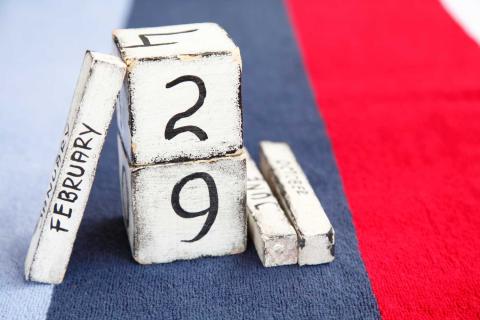Leap Day and Year: The History, Science and Global Impact

Every four years, we add an extra day to our calendars, and February 29 becomes a date that captures our imagination. But beyond the novelty of an additional day, there's a fascinating history and global influence attached to Leap Day and Year that goes beyond the ordinary.
Why is there a Leap Year?
Leap years have been used for centuries to synchronize the calendar year with the astronomical year. The Earth's orbit around the Sun takes about 365.25 days, so without the addition of an extra day every four years, our calendar would gradually drift out of sync with the solar year. This additional day is added to the calendar as February 29th, making that year 366 days long instead of the usual 365.
How did Leap Year start?
The concept of a leap year dates back to the time of Julius Caesar in ancient Rome. The Julian calendar, introduced in 45 BCE, established the leap year system we still use today. However, the Julian calendar slightly overcompensated for the extra time it takes the Earth to orbit the Sun, resulting in a small discrepancy.
In the 16th century, the Gregorian calendar was introduced by Pope Gregory XIII to address this discrepancy. The Gregorian calendar adjusted the leap year rule to exclude certain leap years that would have been observed under the Julian calendar. According to the Gregorian calendar, a year is a leap year if it is divisible by 4, except for years that are divisible by 100 but not divisible by 400. This adjustment helps keep the calendar year more closely aligned with the astronomical year.
When was the first Leap Day?
The first occurrence of a Leap Day, as we understand it today, would have been on February 29, 45 BCE, when the Julian calendar was implemented. This marked the beginning of the four-year cycle where an extra day is added to the calendar approximately every four years to align it with the Earth's orbit.
Though in that day, it may not have been February 29. The calendar added an extra day that could be any intercalary day after February 23rd. The actual date wasn't set until the passage of the British Calendar Act of 1750 in which January became the start of the year and Leap Day became officially February 29.
Why is Leap Day February 29?
When the Julian calendar, introduced by Julius Caesar in 45 BCE, established the concept of a leap year, February already had an established reputation for being the last month of the Roman calendar.
At that time, the Roman calendar consisted of 10 months, and it was a lunar calendar with a year of around 354 days. This resulted in a misalignment with the solar year, and Caesar's reform aimed to correct this by introducing the Julian calendar, which included a leap year every four years.
February was the last month of the Roman calendar, and the addition of an extra day to this month made sense in the context of Caesar's reforms. The choice of February 29 helped maintain some continuity with existing traditions while addressing the need for a leap year to keep the calendar in sync with the Earth's orbit around the Sun.
How to Calculate Leap Year
Leap Day is typically every 4 years and is the day of the year where we adjust for the extra approximate 1/4 day in the earths 365.242190 rotation around the sun. This is about 6 hours more time per year. Leap Day is thus added to the calendar every year that is divisible by 4 with an exception. Because 1/4 day is not exact, we adjust this difference about every 100 years by skipping a leap day on the years divisible by 100, again, with an exception. On the years divisible by 100 and 400, we keep the Leap Day.
What Years are Leap Year?
Years that are divisible by 4 (but not divisible by 100)
2024 2028 2032 2036 2040
2044 2048 2052 2056 2060
2064 2068 2072 2076 2080
2084 2088 2092 2096
Not Leap Years, divisible by 100
2100 2200 2300
2400 is however a Leap Year because it is also divisible by 400
Leap Day Global Impact
Leap Day has not only become a quirk in our calendars but also a day of traditions and superstitions. In some cultures, it is considered a day when women can propose to men. Others view it as a day for unexpected events and reversals of fortune. Exploring these global Leap Day traditions provides a fascinating insight into the diversity of beliefs and customs associated with this unique occurrence.
In the 21st century, Leap Year continues to influence various aspects of our lives. From birthday celebrations for those born on February 29 to the practical challenges faced by businesses and organizations adjusting to the irregularity, Leap Year remains a topic of interest and discussion.




